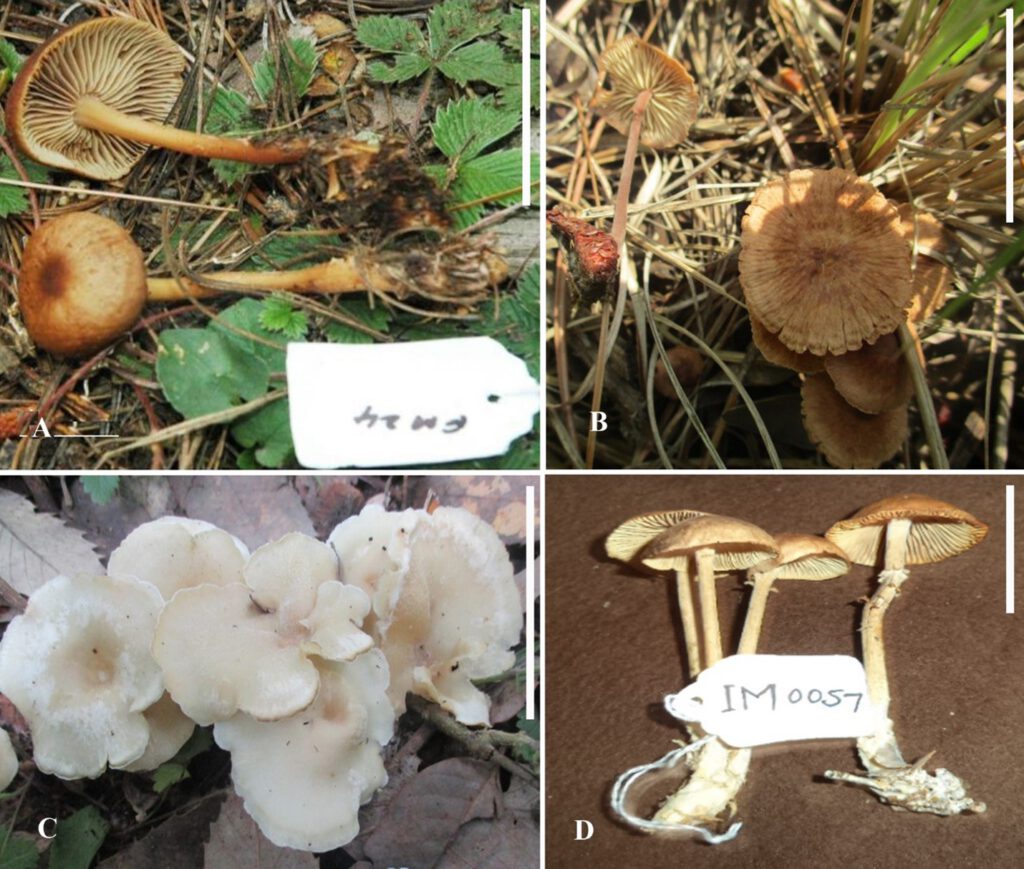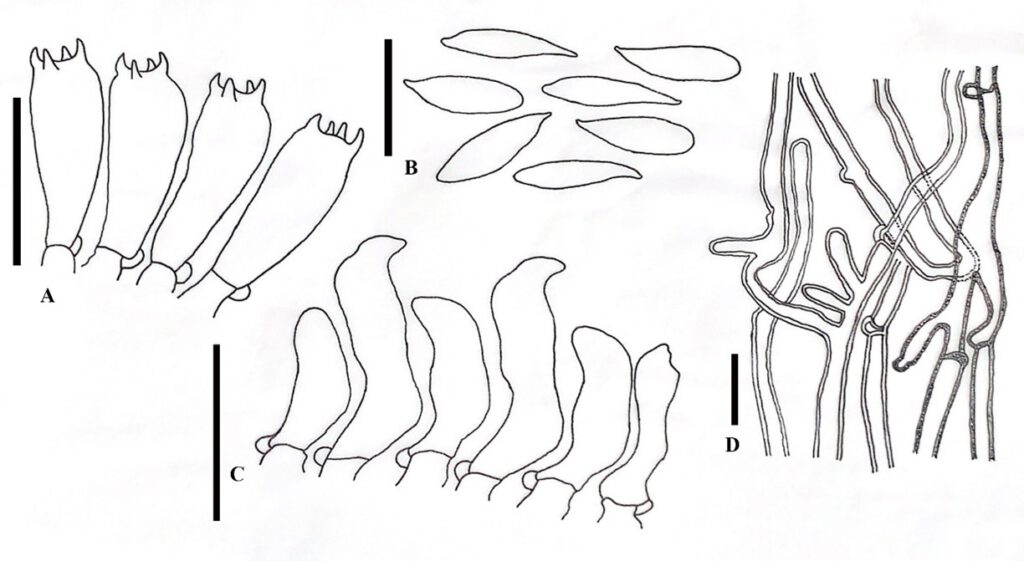Gymnopus subnudus (Ellis ex Peck) Halling Mycotaxon 63: 365, 1997. Fig. 64,68
MycoBank number: MB 437643; Index Fungorum number: IF 437643; Facesoffungi number: FoF 10624;
Basidiocarps medium sized. Pileus 21−30 mm wide, convex to broadly convex with incurved margin at young stage becoming decurved to uplifted at maturity, dull reddish brown (5YR5/3,5/4) to dull brown (7.5YR6/3) or reddish brown (5YR5/6,5/8); surface dry, glabrous. Lamellae distant to subdistant, adnexed, entire, whitish (7.5Y9/2) to dull orange (5YR7/3,7/4); lamellulae evenly distributed, small and short. Stipe 50−70 × 2−5 mm, central, tapered toward the apex, fibrous, light brown (7.5YR7/4,7/6), to light reddish brown (7.5YR8/3), whitish pubescence at the base. Basidiospores [n/b/p] 30/2/1], (5.0‒) 5.8‒7.9 (‒8.3) × (1.9‒) 2‒2.76 (‒2.8) μm, L × W= 6.7 × 2.3 μm, Q = (2.1−) 2.5−3.4 (−4), Qe = 2.9, lacrymoid to ellipsoid, thin walled, smooth. Basidia 21−26 × 4−5 µm, clavate to subclavate, 2−4 spored. Cheilocystidia 14−30 × 4.6−8 µm, flexuose, ventricose-fusoid to mucronate, thick-walled. Pleurocystidia absent. Pileipellis hyphae 4−5 µm wide, cylindrical, septate, branched, thick-walled (0.8−1 µm) with rare projections. Stipitipellis hyphae 5.2−6.5 µm wide, thick-walled (0.7−0.9 µm). Clamp-connections present in all tissues. Odour and taste not observed. KOH on tissues not observed.
Habitat – On litter of both fallen needles and branches of Pinus roxbergii.
Material examined – Pakistan, Khyber Pakhtunkhwa, District Battagram, 34°33′ and 34°47′ latitude and 72°55′ and 73°14′ longitude, at 2040 m a.s.l, 21 July 2017, M. B Khan (LAH35879).
Notes – Gymnopus subnudus is characterized by a dull reddish brown to dull brown or reddish brown dark brown pileus; convex to broadly convex at disc; distant to subdistant, whitish to dull orange adnexed lamellae; light brown, to light reddish brown superficially fibrillose stipe with pubescent base; lacrymoid to ellipsoid, smooth, thin-walled spores; flexuose, ventricose-fusoid to mucronate cheilocystidia; pleurocystidia absent. Pileipellis hyphae thick-walled, branched, with rare projections, clamp connections present in all tissues. Our description agrees well with the original description (see Halling 2004) except for the size of the basidia 22.8−35 × 5.6−10.8 µm, spores 8.6−10.8 (−12) × 3.2−4.4 µm and cheilocystidia 29−37.8 (−52.5) × 7.6−8.6 µm all of which are significantly larger than for our taxon. This collection represents the first record of G. subnudus for Pakistan.

Figure 64 – Basidiocarps of A. Gymnopus ocior; B. G. bunerensis; C. Collybiopsis biformis; D. G. subnudus in the field. Scale bars: A-D=50 mm.

Figure 68 – Gymnopus subnudus (LAH35879: New geographical record). A. Basidia B Basidiospores C Cheilocystidia DPileipellis. Drawings by Muhammad Ishaq. Scale bars: A,C =20 μm, B, D = 10 μm.
